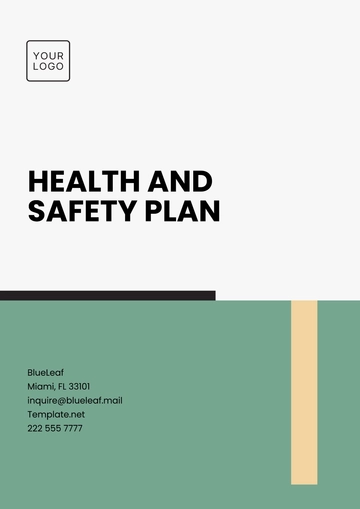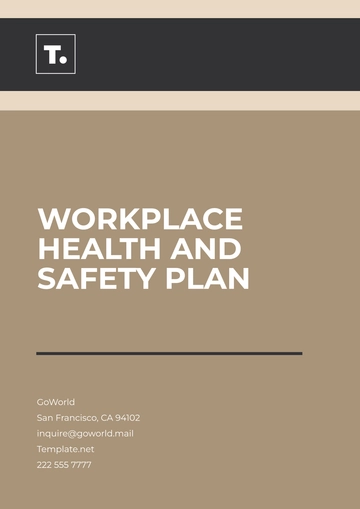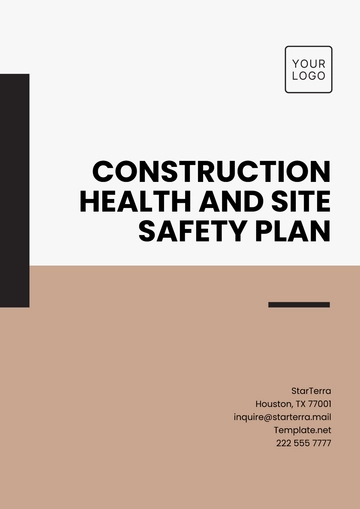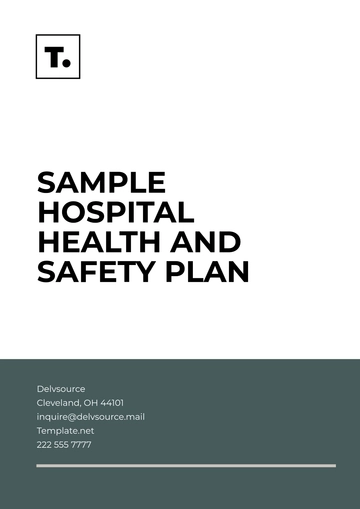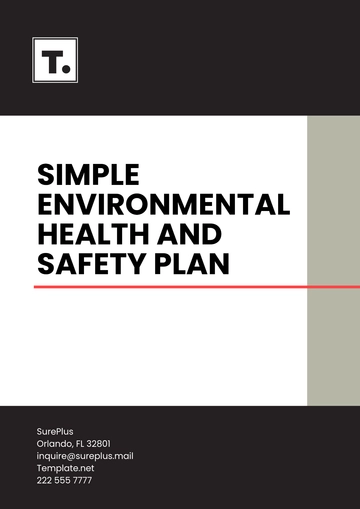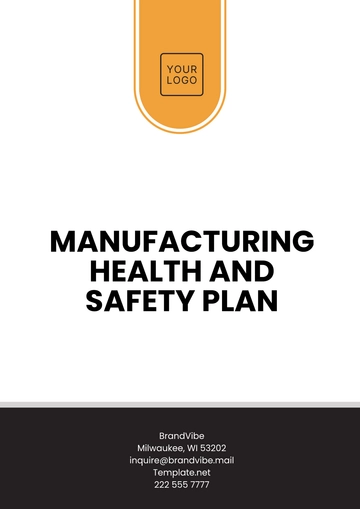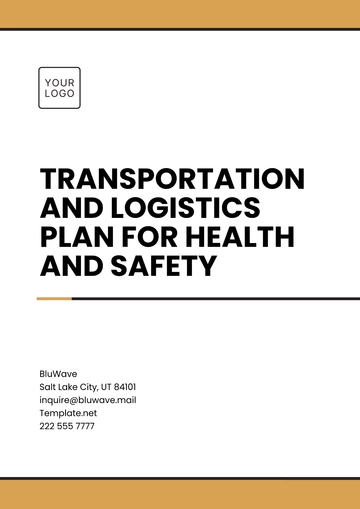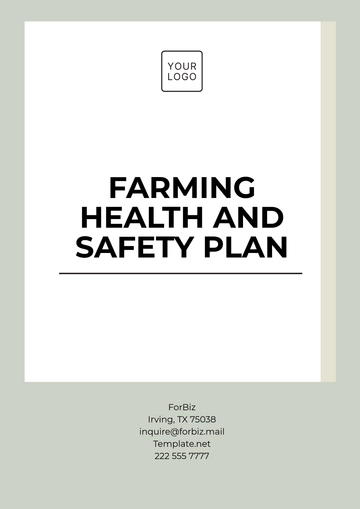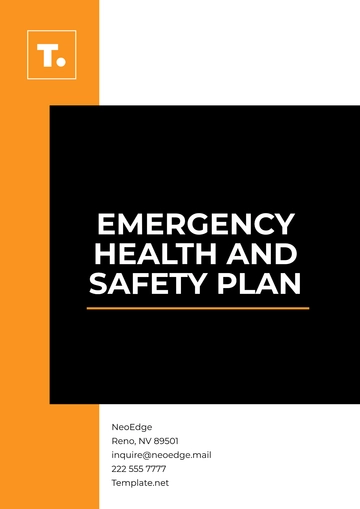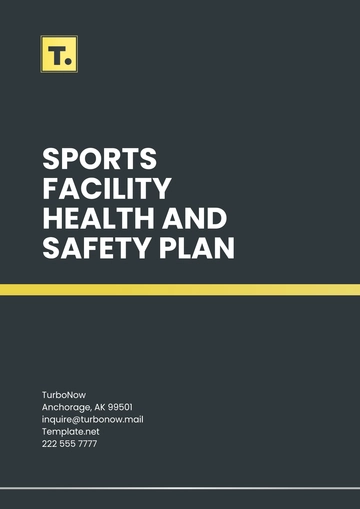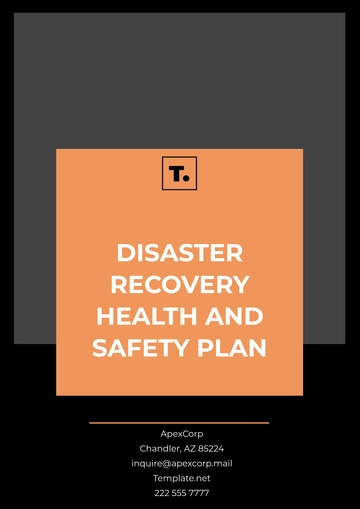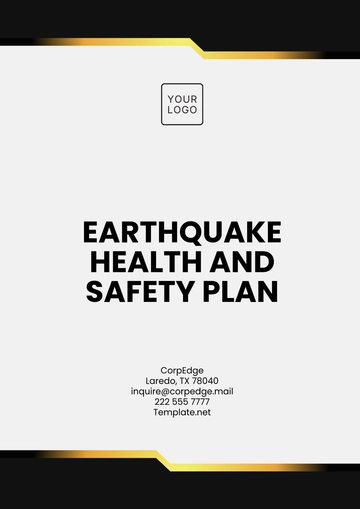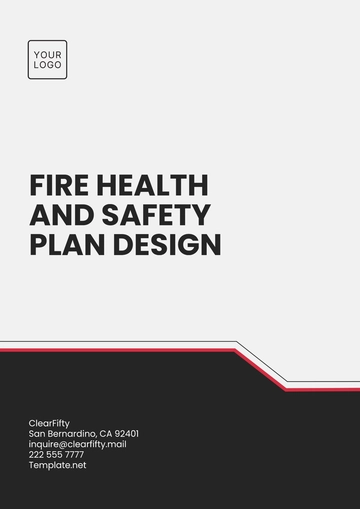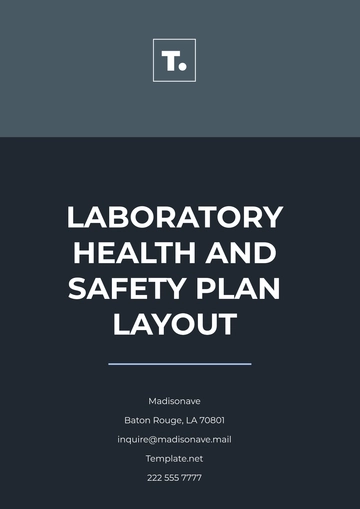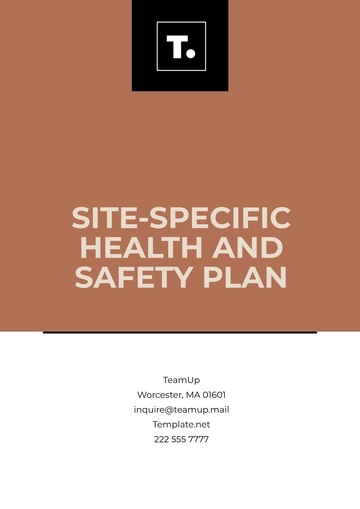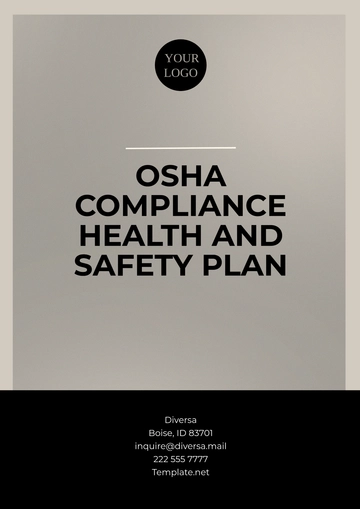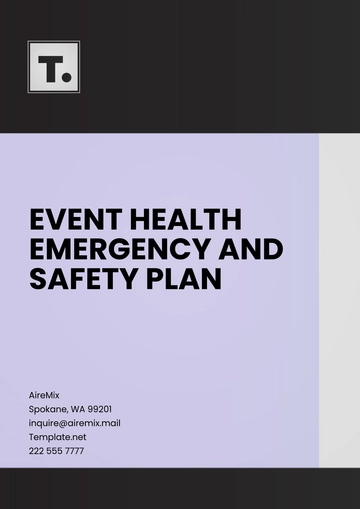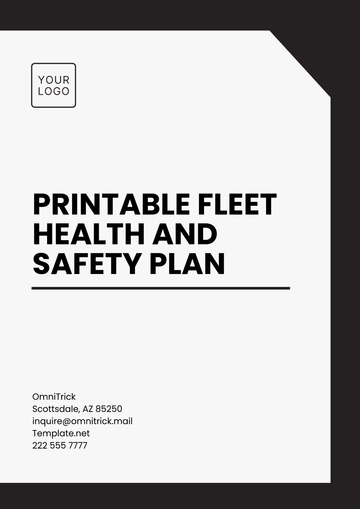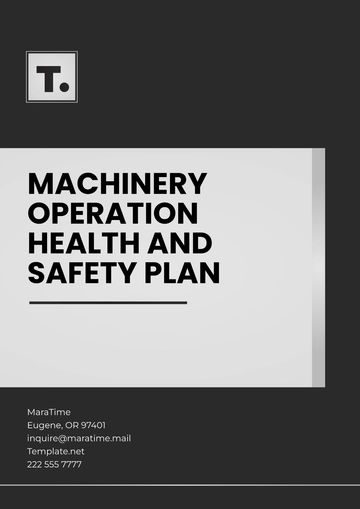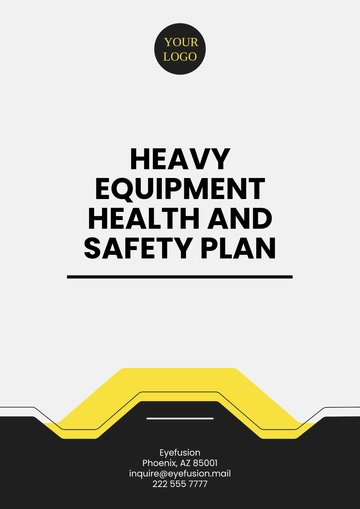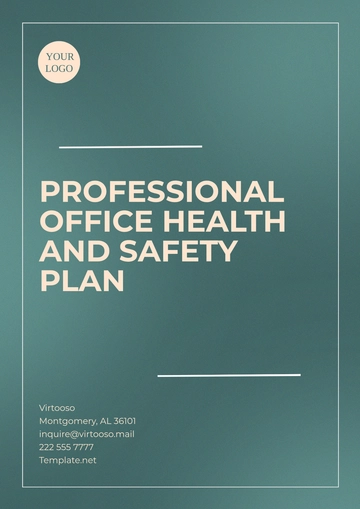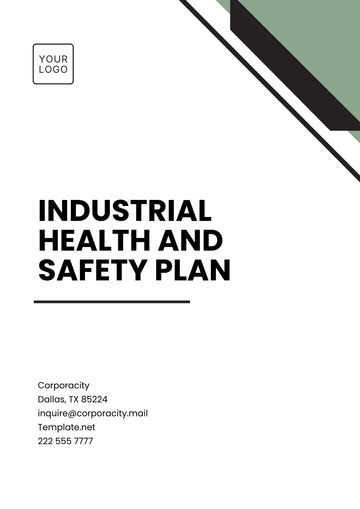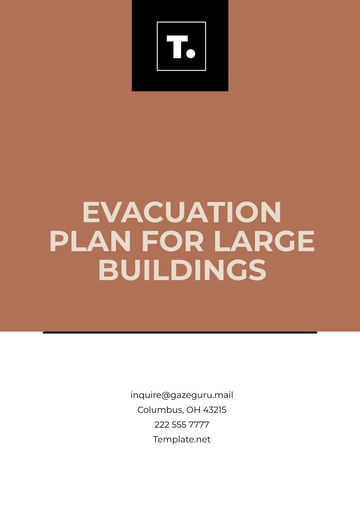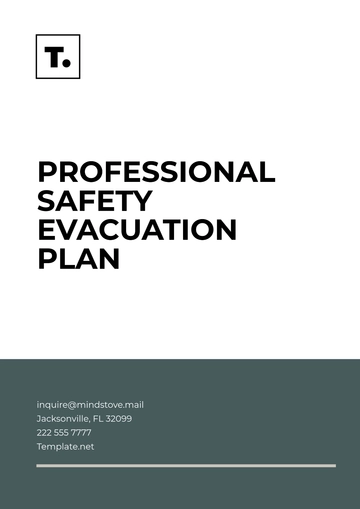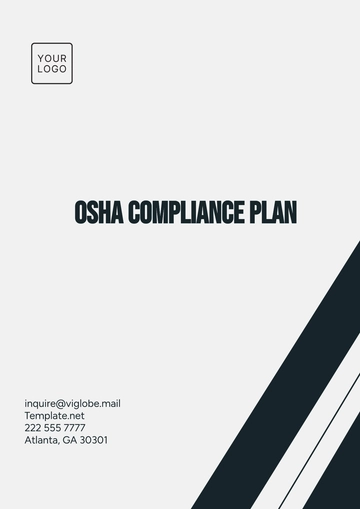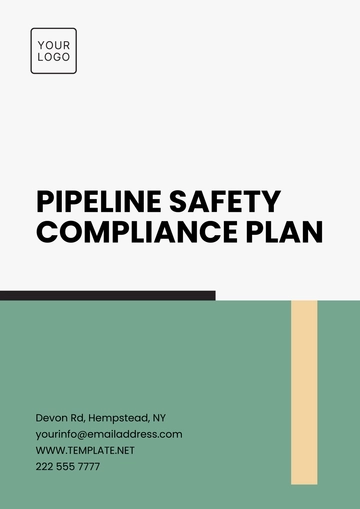Free Safety And Security Plan

I. Introduction
The Safety and Security Plan for [YOUR COMPANY NAME] is designed to ensure the protection and well-being of all employees, visitors, and property. This plan provides comprehensive guidelines and procedures to prevent, prepare for, respond to, and recover from various potential risks, including natural disasters, medical emergencies, security threats, and other hazards. Our mission is to maintain a safe and secure environment through vigilance, preparedness, and coordinated response efforts.
II. Emergency Contacts
1. Internal Contacts
Main Office: [Your Office Number]
Safety and Security Coordinator: [Coordinator Name]
Email: [Coordinator Email]
Phone: [Coordinator Phone Number]
2. External Contacts
Local Police Department: [Local Police Contact Number]
Fire Department: [Fire Department Contact Number]
Medical Services: [Medical Services Contact Number]
III. Risk Assessment and Management
1. Hazard Identification
Conduct regular assessments to identify potential hazards, including fire, electrical issues, chemical spills, and security threats.
Maintain an updated list of identified risks and review it periodically.
2. Risk Mitigation
Implement measures to mitigate identified risks, such as installing fire suppression systems, securing hazardous materials, and enhancing building security.
Regularly inspect and maintain safety and security equipment.
3. Emergency Preparedness
Develop and distribute emergency response procedures for various scenarios, including fire, medical emergencies, active shooter situations, and natural disasters.
Ensure all employees are familiar with these procedures and know their roles in an emergency.
IV. Fire Safety
1. Fire Prevention
Ensure that all electrical equipment is in good condition and free from defects.
Store flammable materials safely and in designated areas.
Conduct regular fire drills and training sessions.
2. Fire Response Procedures
Activate the nearest fire alarm in the event of a fire.
Evacuate the building using designated exits and proceed to the assembly area: [Assembly Area Location].
Use fire extinguishers only if trained and it is safe to do so. Remember PASS: Pull the pin, Aim at the base of the fire, Squeeze the handle, and Sweep side to side.
V. Medical Emergencies
1. Response Procedures
Call 911 immediately for any medical emergency.
Provide first aid if trained and it is safe to do so.
Notify the Safety and Security Coordinator.
2. First Aid Kits and AEDs
Ensure first aid kits and Automated External Defibrillators (AEDs) are easily accessible and well-stocked.
Train employees in basic first aid and AED use.
VI. Security Measures
1. Access Control
Implement access control measures, such as ID badges, key cards, and visitor logs, to monitor and restrict entry to the facility.
Install security cameras at key points around the premises.
2. Surveillance
Monitor surveillance systems regularly to detect and respond to any suspicious activity.
Conduct regular security patrols inside and outside the building.
3. Incident Response
Report any security breaches or suspicious activity to the Safety and Security Coordinator immediately.
Follow lockdown procedures in the event of an active shooter or other security threats.
VII. Evacuation Plan
1. Evacuation Routes
Clearly mark and maintain all evacuation routes.
Ensure that all employees know the nearest exits from their workstations.
2. Assembly Area
Designate an assembly area: [Assembly Area Location].
Conduct headcounts at the assembly area to ensure all employees are accounted for.
VIII. Training and Drills
1. Employee Training
Provide regular training sessions on safety and security procedures, including fire response, medical emergencies, and security threats.
Include safety and security training in the orientation program for new employees.
2. Regular Drills
Conduct regular drills for various emergency scenarios, including fire, evacuation, and lockdown drills.
Evaluate the effectiveness of each drill and update the plan as necessary.
IX. Review and Updates
1. Plan Review
Review and update the Safety and Security Plan annually or after any significant incident.
Solicit feedback from employees to improve the plan’s effectiveness.
2. Communication
Ensure that all employees are aware of any updates to the plan.
Make updated versions of the plan accessible to all staff members.
X. Conclusion
The Safety and Security Plan for [Your Company Name] is essential for ensuring a secure and safe environment for all employees and visitors. By adhering to the outlined procedures, participating in regular training and drills, and maintaining a proactive approach to risk management, we can effectively protect our community.
- 100% Customizable, free editor
- Access 1 Million+ Templates, photo’s & graphics
- Download or share as a template
- Click and replace photos, graphics, text, backgrounds
- Resize, crop, AI write & more
- Access advanced editor
Ensure workplace safety with the Safety and Security Plan Template from Template.net. This fully customizable and editable template is designed for easy use and personalization. Effortlessly tailor it to your needs, and enjoy seamless editing in our AI Editor Tool for a comprehensive security plan.
You may also like
- Finance Plan
- Construction Plan
- Sales Plan
- Development Plan
- Career Plan
- Budget Plan
- HR Plan
- Education Plan
- Transition Plan
- Work Plan
- Training Plan
- Communication Plan
- Operation Plan
- Health And Safety Plan
- Strategy Plan
- Professional Development Plan
- Advertising Plan
- Risk Management Plan
- Restaurant Plan
- School Plan
- Nursing Home Patient Care Plan
- Nursing Care Plan
- Plan Event
- Startup Plan
- Social Media Plan
- Staffing Plan
- Annual Plan
- Content Plan
- Payment Plan
- Implementation Plan
- Hotel Plan
- Workout Plan
- Accounting Plan
- Campaign Plan
- Essay Plan
- 30 60 90 Day Plan
- Research Plan
- Recruitment Plan
- 90 Day Plan
- Quarterly Plan
- Emergency Plan
- 5 Year Plan
- Gym Plan
- Personal Plan
- IT and Software Plan
- Treatment Plan
- Real Estate Plan
- Law Firm Plan
- Healthcare Plan
- Improvement Plan
- Media Plan
- 5 Year Business Plan
- Learning Plan
- Marketing Campaign Plan
- Travel Agency Plan
- Cleaning Services Plan
- Interior Design Plan
- Performance Plan
- PR Plan
- Birth Plan
- Life Plan
- SEO Plan
- Disaster Recovery Plan
- Continuity Plan
- Launch Plan
- Legal Plan
- Behavior Plan
- Performance Improvement Plan
- Salon Plan
- Security Plan
- Security Management Plan
- Employee Development Plan
- Quality Plan
- Service Improvement Plan
- Growth Plan
- Incident Response Plan
- Basketball Plan
- Emergency Action Plan
- Product Launch Plan
- Spa Plan
- Employee Training Plan
- Data Analysis Plan
- Employee Action Plan
- Territory Plan
- Audit Plan
- Classroom Plan
- Activity Plan
- Parenting Plan
- Care Plan
- Project Execution Plan
- Exercise Plan
- Internship Plan
- Software Development Plan
- Continuous Improvement Plan
- Leave Plan
- 90 Day Sales Plan
- Advertising Agency Plan
- Employee Transition Plan
- Smart Action Plan
- Workplace Safety Plan
- Behavior Change Plan
- Contingency Plan
- Continuity of Operations Plan
- Health Plan
- Quality Control Plan
- Self Plan
- Sports Development Plan
- Change Management Plan
- Ecommerce Plan
- Personal Financial Plan
- Process Improvement Plan
- 30-60-90 Day Sales Plan
- Crisis Management Plan
- Engagement Plan
- Execution Plan
- Pandemic Plan
- Quality Assurance Plan
- Service Continuity Plan
- Agile Project Plan
- Fundraising Plan
- Job Transition Plan
- Asset Maintenance Plan
- Maintenance Plan
- Software Test Plan
- Staff Training and Development Plan
- 3 Year Plan
- Brand Activation Plan
- Release Plan
- Resource Plan
- Risk Mitigation Plan
- Teacher Plan
- 30 60 90 Day Plan for New Manager
- Food Safety Plan
- Food Truck Plan
- Hiring Plan
- Quality Management Plan
- Wellness Plan
- Behavior Intervention Plan
- Bonus Plan
- Investment Plan
- Maternity Leave Plan
- Pandemic Response Plan
- Succession Planning
- Coaching Plan
- Configuration Management Plan
- Remote Work Plan
- Self Care Plan
- Teaching Plan
- 100-Day Plan
- HACCP Plan
- Student Plan
- Sustainability Plan
- 30 60 90 Day Plan for Interview
- Access Plan
- Site Specific Safety Plan
